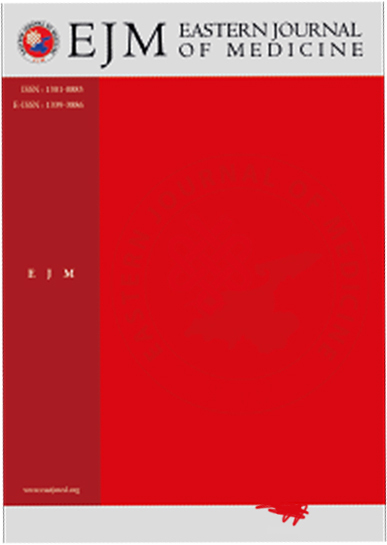Differential diagnosis of papillary thyroid carcinoma: Immunocytochemical study of 112 cases
Mustafa Kösem1, Sabriye Polat1, Mustafa Öztürk2, Çetin Kotan3, Hanefi Özbek4, Ekrem Algün212
3
4
5
Papillary carcinoma is diagnosed mainly by its classical papillary structures and nuclear changes. However similar structural and cytological features may also be seen in other lesions of thyroid. Immunohistochemical staining methods help in these circumstances that cytological features do not suffice for differential diagnosis. In this study we stained 112 parafin-embedded blocks with thyroidal lesions (60 papillary carcinoma and 52 other benign or malignant thyroidal lesions) with HBME-1, CK-19, S-100 and EMA. Papillary carcinomas were stained 8.3% weakly, 90% moderately and strongly with HBME-1; 11.7% weakly, 88.3% moderately and strongly with CK-19; 50% weakly, 50% moderately and strongly with EMA; 26.6% weakly, 48.4% moderately and strongly with S-100. Other thyroid lesions were stained 36.5% weakly, 5.8% moderately with CK-19; 26.6% weakly, 15.4% moderately with EMA; 7.7% weakly, 1.9% moderately with S-100. None of the thyroid lesions, but papillary carcinoma, were stained with HBME-1. Papillary carcinoma cases had significantly higher staining with all four markers. However, HBME-1 and CK-19 were considered more valuable in differential diagnosis for papillary carcinomas, since they showed moderate and strong staining. Also high sensitivity and specificity of HBME-1 makes it a good marker for the diagnosis of papillary thyroid cancer.
Keywords: Papillary thyroid carcinoma, HBME-1, CK-19, S-100, EMAManuscript Language: English














